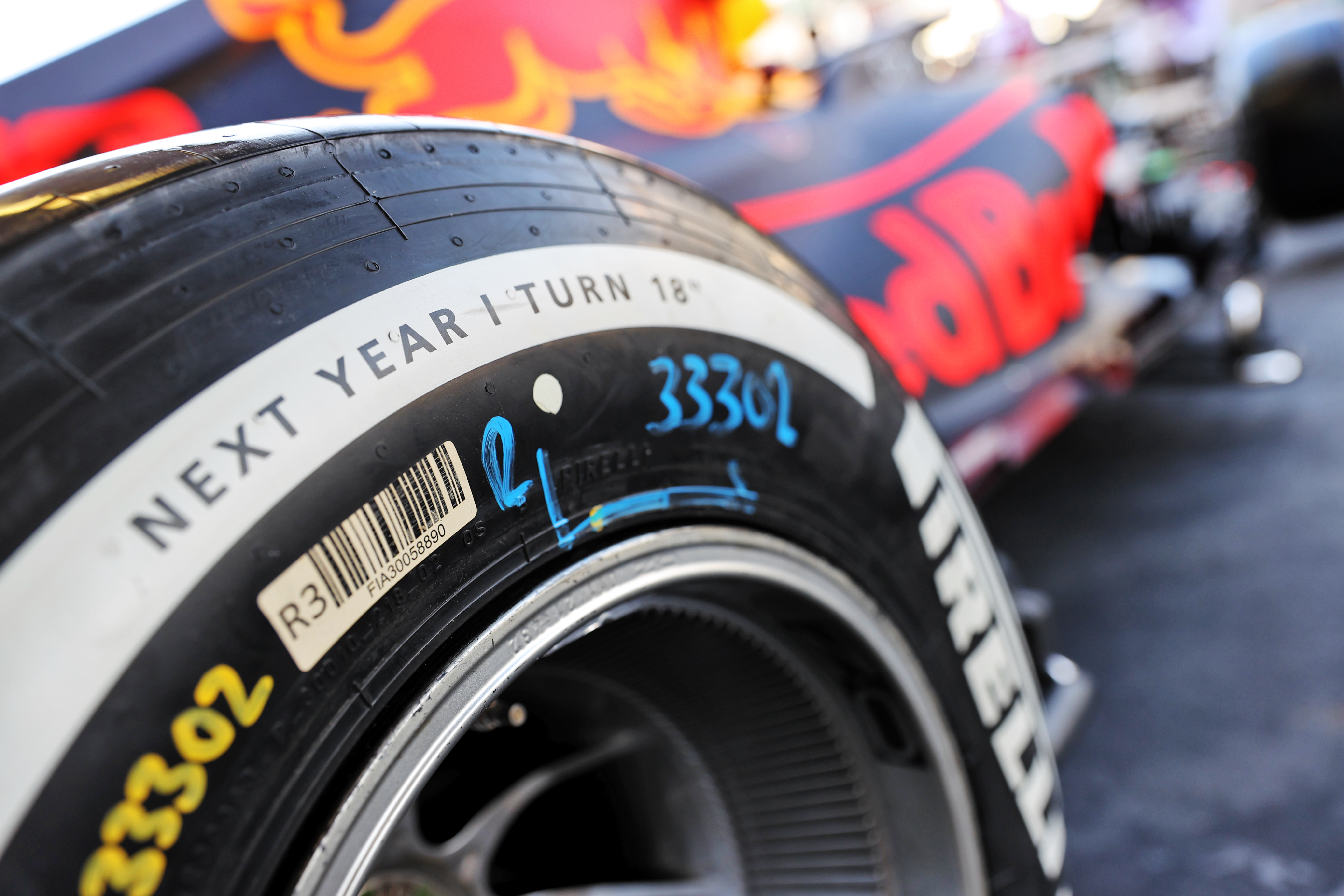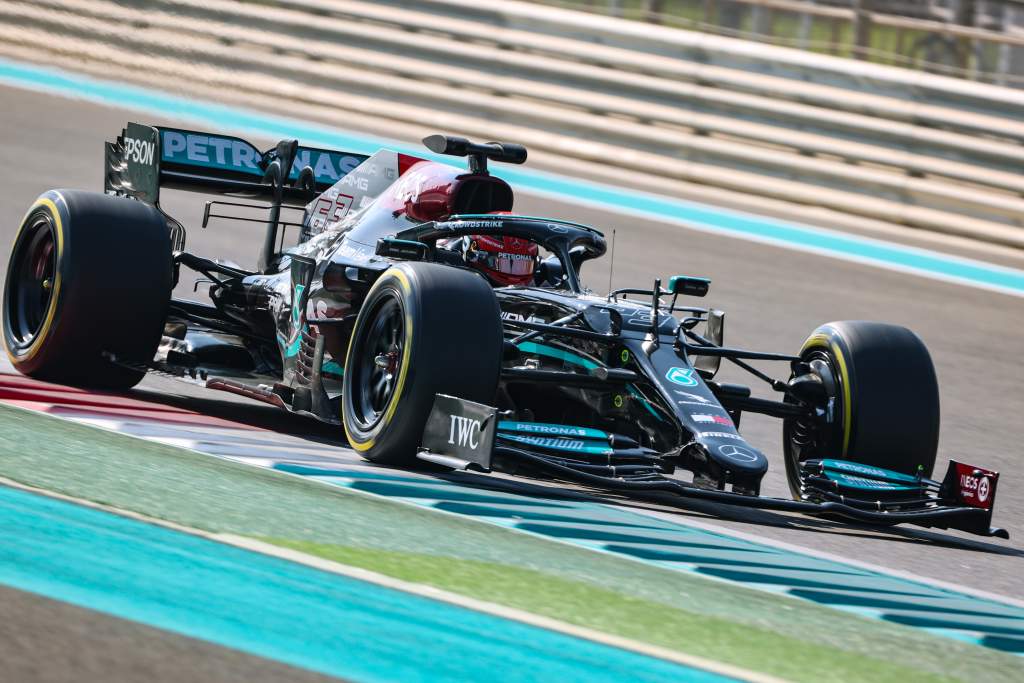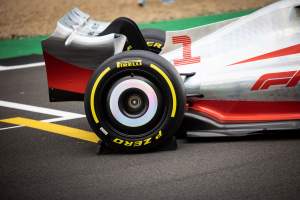Up Next

We have heard a lot about the expected changes to the racing the new aero will make this year. But less about the equally new Pirelli tyres. They are arguably every bit as critical as the aero in determining whether F1’s aim for more on-track action is realised.
Pirelli’s Mario Isola was keen to point out in the company’s 2022 motorsport presentation that the new 18-inch F1 tyres work in a very different way to those of before and have been conceived to meet the requests of the drivers, “who have asked for less overheating so that they can push harder in the race”.
“So we have followed this direction with an optimised footprint and a new range of compounds.”
If drivers were to find they needed to manage their pace through a stint just as much as before, the aerodynamic solutions to F1’s long-term overtaking conundrum wouldn’t necessarily help much. It is crucial that these tyres do as Pirelli claims.
Fans may not realise that the pace of the cars on race day is usually whole seconds slower than they could potentially go. The drivers cannot push hard on the tyres if they are to get the stint lengths required for the shortest possible race time.
It sounds counter-intuitive, but the fastest way to finish the race has been to drive a couple of seconds off the pace. This has been the case for many years now, to a greater or lesser extent.
Usually the limitation is thermal degradation of the rear tyres. If a driver were to drive as close to the limit in the race as in qualifying, the tyre temperatures would soar way past the point of no return within about three laps.
Once they have reached this level of overheating the rubber hardens, becoming hopelessly gripless regardless of how much tread they still have left.
There is no bringing the tyre back from this. So drivers race constantly on the verge of that thermal threshold, as fast as they can go without the tyre being damaged in this way. But that is invariably nowhere near as fast as the driver could go.
At some tracks the limitation is upon the front tyres – and often this is a wear limitation rather than a heat one. The same process applies in terms of how the driver’s pace is defined by how long he must make the rubber last. But the pace compromise is usually less for this type of degradation.
To give an idea of how the heat degradation characteristics of the previous tyres defined the race pace, let’s look at the race of Max Verstappen at the first event of 2021, in Bahrain, where he narrowly lost out to an early-stopping Lewis Hamilton after leading the first stint from pole.
Verstappen’s pole time was a 1m28.917s, set on the soft tyres. His two-stop race was divided up into a first stint on mediums, a middle stint on hards and the final stint back on mediums.
The medium was found to be around 0.6s slower over a single lap than the soft, with the hard a full second slower than the soft. Pirelli estimated that the degradation rate of the medium was around 0.15s per lap and that of the hard around 0.1s.
We can account for these approximate differences in the tyres as we look at Verstappen’s race laps – and that of the fuel load, by far the dominant factor in the difference between qualifying and race pace. The teams know to a pretty accurate degree how much laptime the weight of fuel costs at any given track. For Bahrain the number is around 0.32s per lap for each 10kg. We know that around 1.875kg per lap will be used at race pace around Bahrain.
There is also a difference in power unit usage in that during a qualifying lap, full deployment will be used to the point of using up all the battery’s energy store. Whereas in a race this has to be more balanced. That difference typically accounts for around 0.3s of lap time.
Account for all those order of magnitude variables in Verstappen’s actual race laps (once the safety cars and VSCs were gone) and we get the following:
First stint average lap – 1m36.364s
Slower than pole by 7.45s
Of which fuel load accounts for 2.7s
The tyre compound offset accounts for 0.6s
Tyre deg accounts for 1.65s
PU set-up accounts for 0.3s
The difference between the pace the driver was maintaining in the first stint of the race was 7.45s slower than his qualifying lap, only 5.25s of which can be accounted for by his fuel load, tyres and power unit usage. The rest – the missing 2.2s – is the pace he needed to surrender in order to keep the tyres from overheating and ruining his race.
It’s a similar story in the remaining stints. The closest he got to the ultimate pace in any of his laps was his first flying lap on the new hard tyres to begin the second stint – when he was ‘only’ 1.76s off a proper pace.
Bahrain is particularly demanding on the rear tyres and the pace difference between qualifying and the race is not always so extreme elsewhere. But not at any track do the drivers get close to their ultimate potential laptime on race day.
So trying to make any judgement on who is faster in a race is meaningless – as it’s only about undercut/overcut gaps, track position and who is faster around the pit stops.
Tyres of the hybrid era of F1 have been subject to greater loads than any in F1 history thanks to the combination of weight, downforce and torque.
So it’s not altogether fair to compare them to tyres of the last tyre war era (which ended after 2006), but back then on lighter, less powerful cars with less downforce, it was possible to have tyres which degraded with wear but which did not overheat and on which it was therefore possible to drive very close to the limit.

The tyres would still be slower as they got older but the fastest way to do the race was to drive as fast as possible. That’s where ideally F1 is trying to get back to – though whether that is possible with such cars is far from certain.
What is encouraging is the feedback from the Abu Dhabi tests of the new tyres in December, where drivers were reporting that, yes, they could push harder than before. We await with great interest to see how much progress Pirelli has made.






